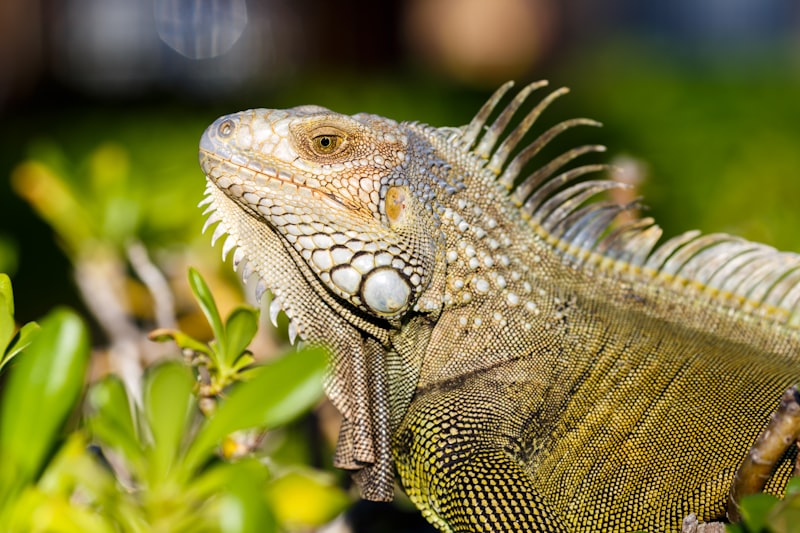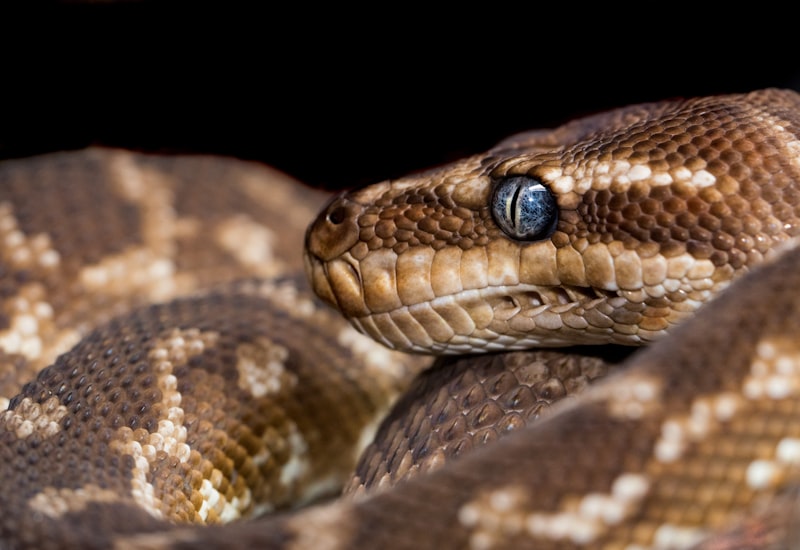Have you ever wondered about the bizarre creatures that inhabit our planet? Reptiles, with their ancient lineage and diverse adaptations, showcase some of nature’s most extraordinary designs. From the rainforests of South America to the deserts of Australia, each continent harbors its own collection of weird and rare reptiles that defy expectations.
Take the Mata Mata turtle, native to the Amazon basin. With its flat, leaf-like appearance and long, tubular snout, it perfectly blends into the muddy river bottoms where it waits patiently for unsuspecting prey. This master of camouflage is a living testament to nature’s creativity in adaptation.
Venture into the arid landscapes of Madagascar, and you might encounter the Satanic leaf-tailed gecko. Named for its devilish appearance and remarkable leaf-like tail, this gecko relies on its cryptic coloration to evade predators while stalking insects under the cover of darkness.
In the deserts of North America, the Gila monster commands attention with its vibrant orange and black scales. Despite its fearsome appearance, this venomous lizard is relatively docile unless provoked, relying on its colorful warning to deter potential threats.
Travel south to the rainforests of Africa, and you might stumble upon the bizarrely beautiful flap-necked chameleon. Known for its ability to change colors and its strikingly frilled neck, this chameleon is a true marvel of evolutionary adaptation, blending into its lush green surroundings with ease.
From the cold waters of New Zealand emerges the tuatara, a living fossil that has remained virtually unchanged for millions of years. With its spiky crest and third eye on top of its head, the tuatara offers a glimpse into the distant past of reptilian evolution.
These examples only scratch the surface of the incredible diversity of weird and rare reptiles found across our planet’s continents. Each species tells a unique story of adaptation and survival in some of the world’s most challenging environments, captivating scientists and nature enthusiasts alike with their awe-inspiring features and behaviors.
10 Bizarre Reptiles You Didn’t Know Existed Across the Globe
Ever wondered about the weird and wonderful creatures that roam our planet? Reptiles, in particular, have a knack for surprising us with their diversity and peculiar adaptations. Let’s dive into a fascinating list of 10 bizarre reptiles that may have escaped your notice until now.
-
Matamata Turtle: Hailing from South America, the Matamata turtle looks like something out of a sci-fi movie. Its flat, wrinkled shell and tubular snout make it a master of camouflage in murky waters.
-
Thorny Devil: Found in the Australian Outback, the Thorny Devil is covered in intimidating spikes. Despite its appearance, it’s quite harmless and survives by channeling water from its skin to its mouth.
-
Saturniid Moth Caterpillar: This caterpillar from Madagascar may not seem like a reptile at first glance, but it’s the larval stage of a moth. Its vibrant colors and elaborate spines deter predators effectively.

Uroplatus Gecko: Native to Madagascar, this gecko takes camouflage to the next level. With its leaf-like appearance and ability to flatten against tree bark, it’s incredibly difficult to spot in its natural habitat.
-
Flying Dragon: Don’t let the name fool you – this reptile doesn’t actually fly like a bird. Found in Southeast Asia, the Flying Dragon has extended ribs that support a wing-like structure of skin, allowing it to glide between trees.
-
Aye-Aye: Another bizarre creature from Madagascar, the Aye-Aye is a type of lemur with distinctive elongated fingers. It uses these fingers to tap on trees and listen for insects hiding inside, making it a unique reptilian hunter.
-
Peninsular Rock Agama: This lizard from India stands out with its striking blue and orange coloration. During the breeding season, males display vibrant colors to attract mates, showcasing a stunning example of reptilian beauty.
-
Long-nosed Vine Snake: Found in Central and South America, this snake has an exceptionally slender body and an elongated snout. Its appearance and behavior mimic that of a vine, allowing it to ambush unsuspecting prey.
-
Chinese Crocodile Lizard: Resembling a miniature crocodile, this rare lizard is native to China. It spends much of its time in water, using its flattened tail to swim gracefully through rivers and ponds.
-
Gharial: Often referred to as a fish-eating crocodile, the Gharial is known for its long, slender snout adorned with numerous sharp teeth. Found in rivers in the Indian subcontinent, it’s a powerful predator adapted for aquatic life.
These 10 reptiles highlight the incredible diversity of life on Earth. From camouflaged turtles to gliding lizards, each species has evolved unique features to thrive in its environment. Next time you’re exploring nature or browsing through wildlife documentaries, keep an eye out for these fascinating creatures that challenge our understanding of the reptilian world.
Unveiling the World’s Most Unusual Reptilian Species
Have you ever wondered about the creatures that lurk beneath the surface of our planet? Among the myriad of fascinating species, reptiles stand out for their incredible diversity and unique adaptations. From the dense rainforests of South America to the arid deserts of Australia, the world is home to some of the most unusual reptilian species that defy imagination.
One such marvel is the Satanic Leaf-Tailed Gecko, native to the lush rainforests of Madagascar. Its name derives from its incredible camouflage ability, resembling a dead leaf complete with veins and discoloration. This master of disguise blends seamlessly into its surroundings, evading predators and surprising prey with its stealth.

Moving to the depths of the ocean, the Leatherback Sea Turtle reigns supreme as the largest turtle species alive today. Unlike its cousins, this colossal creature sports a soft, leathery shell that sets it apart. Known for its epic migrations across oceans, the Leatherback plays a crucial role in marine ecosystems, balancing prey populations and dispersing nutrients through its travels.
Meanwhile, in the heart of the Australian outback, the Thorny Devil stands as a testament to adaptation in extreme environments. Covered in intimidating spikes, this small lizard survives by collecting dew on its skin and channeling it towards its mouth, a remarkable feat in the parched desert landscape.
Each of these creatures represents a testament to evolution’s creativity and nature’s boundless diversity. From geckos that mimic leaves to turtles that wander the open seas, the world of reptiles offers a glimpse into the extraordinary adaptations that have shaped life on Earth. As we uncover more about these fascinating creatures, we continue to unravel the mysteries of our planet’s ecosystems and the delicate balance that sustains them.
Discovering Rare Reptiles: Strange Finds from Around the World
One of the most intriguing finds is the Draco lizard, also known as the flying dragon. Found in Southeast Asia, these small reptiles have wing-like extensions of skin that allow them to glide between trees. Their ability to “fly” from one tree to another makes them a spectacle of evolution’s ingenuity.
In the depths of the Amazon rainforest, another marvel awaits: the bioluminescent snake. This eerie creature emits a faint greenish glow at night, thanks to specialized cells in its scales. This adaptation helps it navigate and communicate in the darkness, a trait rarely seen among terrestrial animals.
Moving to the deserts of Namibia, the shovel-snouted lizard stands out with its peculiar appearance. Named for its distinctive shovel-like snout, this lizard burrows into the sand to escape the scorching African sun. Its unique adaptation allows it to thrive in one of the harshest environments on Earth.
Australia’s outback reveals the thorny devil, a spiky lizard that looks like a miniature dragon. Covered in intimidating spikes, it uses its deceptive appearance to deter predators and blend into its rocky surroundings. Despite its fierce exterior, the thorny devil is a gentle herbivore, feeding mainly on ants and small insects.
From Africa to Australia: Exotic Reptiles That Defy Imagination
Imagine encountering the majestic African Rock Python, a giant among snakes known for its impressive size and formidable strength. Found slithering through the savannas and forests of sub-Saharan Africa, this serpent can reach lengths of over 20 feet, making it one of the largest snake species in the world. Its beautifully patterned scales and stealthy hunting prowess have captured the awe of explorers and wildlife enthusiasts alike.
Venture further into the heart of Africa, and you might come across the Nile Crocodile, a true apex predator of the waterways. With its powerful jaws and streamlined body, this ancient reptile has survived for millions of years virtually unchanged. It commands respect as one of the most efficient hunters in its ecosystem, preying on everything from fish to large mammals with deadly precision.
Across the Indian Ocean, in the vast wilderness of Australia, lives the Thorny Devil, a marvel of adaptation to the harsh desert environment. Covered in intimidating spikes and equipped with a unique water collection system, this lizard roams the arid landscapes with remarkable resilience. Its ability to survive by drinking from dew and even its own skin moisture makes it a symbol of survival against all odds.
Another Australian native, the Frilled Neck Lizard, showcases a spectacular defense mechanism. When threatened, it unfurls a large frill around its neck, resembling a colorful fan, to intimidate predators and impress potential mates. This display of agility and theatrics has earned it a reputation as one of the most visually striking reptiles in the world.
From the iconic African savannas to the rugged Australian outback, these exotic reptiles not only survive but contribute to the rich tapestry of biodiversity on our planet. Their adaptations, behaviors, and unique characteristics continue to captivate scientists and nature enthusiasts, reminding us of the endless wonders that nature has to offer.
As we explore the realms where these creatures thrive, we are reminded of their vital roles in maintaining ecological balance and enriching our understanding of the natural world. Each encounter with these exotic reptiles leaves us in awe of their resilience, beauty, and the intricate web of life that connects us all.
Frequently Asked Questions
How do unique environmental factors influence the evolution of rare reptiles?
Learn how specific environmental conditions play a crucial role in shaping the evolutionary paths of rare reptiles, impacting their adaptation and survival strategies.
What are some of the strangest reptiles found on each continent?
Explore the world’s most peculiar reptiles with our continent-by-continent guide. Discover unique species like the Komodo dragon in Asia, the Galapagos marine iguana in South America, and the tuatara in Oceania.
Where can I see rare reptiles in their natural habitats around the world?
Discover where to observe rare reptiles in their natural habitats worldwide with our guide. Explore diverse ecosystems from tropical rainforests to arid deserts, and learn about conservation efforts to protect these fascinating creatures.
Why are certain reptiles considered rare or endangered across different continents?
Reptiles face endangerment due to habitat loss, illegal trade, climate change, and pollution. These factors vary across continents but collectively threaten their survival. Conservation efforts are crucial to protect these species.
How can I learn more about the conservation efforts for weird reptiles globally?
Discover how to deepen your knowledge of global conservation efforts focusing on unique reptile species. Explore resources and organizations dedicated to preserving these fascinating creatures and learn about the latest initiatives and research advancements in reptile conservation worldwide.


